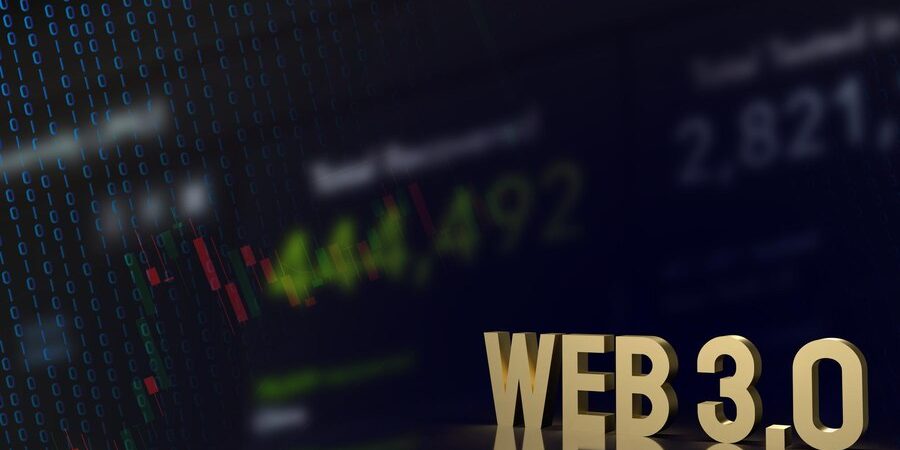Daily foreign exchange transactions in the world market total more than $7.5 trillion, but the same transfer of $100 to another country cost seven dollars and three to five working days to clear. This is wasteful, given that there is an aging infrastructure whereby every cross-border transaction needs several middlemen. But the Internet of Value Web 3.0 Forex revolution is altering the situation on its feet.
Web 3.0 is the web that will be the third evolution of the web where value can flow as freely as information flows today, because of blockchain technology. This new change holds the potential to eradicate historical obstacles of forex trading and achieve an era of transparency, security and efficiency that has not been experienced before.
What Is IoV?
Internet of Value is a digital environment in which anything of value can be moved in real time between two parties without any intermediaries. In contrast to modern systems which need banks and payment processors and clearing houses, the new paradigm involves blocking technology where they will be able to make payment directly to one another courtesy of blockchain.
This idea was originally popularized by Ripple which envisioned a world in which payments with foreign currency are as fast as emailing. The technology is not restricted to money only. With just as much ease, stocks, bonds, intellectual property, or even a right to vote, pass through these networks.
Blockchain builds on this by making a distributed ledger in which transactions are validated and permanent, and executable in real time. Smart contracts save time by automating the process of execution and making it faster (days take just seconds) and it does not involve human error.
The Web 3.0 disrupts the forex markets
How Web 3.0 transforms forex markets
Decentralized Exchange Networks
Forex trading as practiced traditionally is very dependent on institutions that regulate access and price setting. Web 3.0 also brings decentralized exchanges (DEXs) on which trading is done by smart contracts, instead of using the assistance of a human.
These systems have a number of advantages in comparison to traditional systems. During the trading process, the users hold their own funds and the control of their own keys. It does not have one point of failure which might affect the network as a whole. The costs of transactions decline considerably owing to the elimination of unwanted middlemen.
The hack of the Mt. Gox in 2014 that saw the theft of more than 850000 bitcoins demonstrated the risks of centralized systems. Security challenges present in older versions of exchanges Web 3.0 seeks to solve by dispersing control amongst network members instead of a central point of control.
RTS and Reduced Costs
The modern cross-border payments make use of a tangle of correspondent banks, who charge their own fees, and vary in processing times. The Web 3.0 technology is capable of clearing and settling in real time as it links banks around the world via inter-operable networks.
This innovation has the potential of bringing down the cost of international payments to a level that is equivalent to local payments. Banks since would not require holding nostro-vostro in several different currencies, releasing trillions of dollars locked in such schemes.
Major technological firms already have in development systems doing simultaneous clearing and settlement processing payments in real-time. This removes the old-fashioned three-to-five days settlement as well as making transactions more secure by distributing the validation.
Automated Smart Contracts
Its most important innovation under Web 3.0 forex systems are smart contracts. It is an automatic process through which trading terms are automatically enforced due to these self-executing agreements. One study conducted by Deloitte in 2025 revealed that 81 percent of executives think that smart contracts have the potential to cut down costs associated with managing contracts in substantial ways.
The automation is not just on simple buy-sell orders. Smart contract logic can be used in complex derivatives, hedging strategies and risk management protocols. It saves operation expenses and leads to execution speed and accuracy.
Market makers enjoy both the benefits of automated liquidity sourcing to clients and retail traders enjoy institutional-quality trading without traditional barriers to market.
Market Growth and Adoption Presently
The market of blockchain technologies proves to be somewhere explosive. Fortune Business Insights estimates the global blockchain market to grow to a value of $469.49 billion by 2030. At the same time, it is projected that the distributed ledger technology industry will increase in size between 2023, when it registered a value of $4.9 billion, and 2026, when it will have swelled toward around $69.04 billion.
These figures demonstrate a rising use within different institutes. Nevertheless, the problem is education. More than half of the business leaders make the mistake of thinking that blockchain and cryptocurrency are synonymous.
Notwithstanding these ignorance lapses, feasible implementations are becoming popular. According to IBM supply chain management report, there was 40 percent increase in traceability by organizations whose supply chain was utilizing distributed ledger technology which has lead to decrease in instances of fraud and increase in accountability.
Cross-Chain Interoperability
Cross-chain technology, and the ability to communicate and share value across blockchain networks, is one of the most promising developments in Web 3.0. With regard to market analysis, out of 10 projects that were released in 2025, 25% used interoperability solutions, which contributed to the expansion of liquidity and wider availability of decentralized applications…. In the case of forex markets, this implies that traders are able to trade various currency pairs and markets on one interface. Liquidity pools across networks will also be able to merge, leading to deeper markets and ultra-tight spreads.
Benefits to Forex Players
Better Security and Openness
Cryptographic hashing in blockchain makes transactions immutable, and is essential to assuring trust between parties in a trade. All trades are stored on a distributed ledger that cannot be modified retrospectively, and they allow full audit trails.
This openness is also applied to price mechanisms. Twice in place of centralized price feeds that may be manipulated, Web 3.0 systems employ decentralized oracles, which amalgamate information that is pulled by numerous sources.
Greater financial inclusion
With Web 3.0, it is possible that there will be a very high level of financial inclusion and access to forex by the underserved groups through the provision of opportunities in this area. Conventional obstacles such as geography, financial position and the absence of a banking network remains irrelevant in decentralized systems.
Given the 1.7 billion people who have no access to banking in the world, the technology would offer alternative means of access to financial services. Cryptocurrencies have already given value shelter in inflation-stricken countries such as Venezuela where inflation reached 3,000 percent in recent years.
Asset Tokenization Opportunity
Web 3.0 offers the tokenization of real-world assets, which means that it can open access to previously illiquid investments to forex traders. The variety of assets one can get represented as digital tokens includes real estate, commodities, and even art that can be traded on top of traditional currency pairs.
This generates new arbitrates and portfolio diversifications. It enables fractional ownership which enables small investors to invest in small areas which have been driven by large institutional players.
Dilemmas and Concerns
Regulatory Uncertainty
Legal uncertainty is a concern with Web 3.0 and blockchain-based financial services. As Regulatory Review observes, technologies through Web 3.0, pose intricate legal and ethical issues that governments are yet to find solutions to.
Businesses will be required to keep up to date with the upcoming rules regarding the blockchain-based finance, cryptocurrencies, and digital assets to avoid risks and remain compliant. Regulatory framework It is expected that, with increased adoption, it will progress considerably.
Scalability Concerns
The existing blockchain networks have the problem of scalability, which might affect high frequency forex trading. As solutions are being worked upon, the technology should demonstrate its capacity to hold the humongous transaction volumes that define the global currency markets.
Companies need to focus on scalable blockchain solution to address growing transactional as well as information flow demands. These challenges are being mitigated by layer 2 scaling solutions and better consensus mechanisms, although the former are not easily implemented.
Adoption and Education of Users
To be widely adopted, much user education is needed covering the benefits and functionality of Web 3.0. A high proportion of potential users are not familiar with the concepts of blockchain technology,smart contracts, and decentralized finance.
To make it more widespread, financial institutions and technological providers should spend on educational efforts. Such user interfaces should be simplified so that Web 3.0 tools become accessible to the mainstream of forex traders.
Future Prognosis on Internet of Value Forex Systems
Artificial intelligence and machine learning combined with the blockchain will further advance trading systems which will be even more sophisticated. The ability to process huge amounts of data in record speeds gives an insight into investment decisions and risk management, very useful to the AI algorithm.
The cross-network interoperability will also keep gaining and leading to a more united and fluid trading experience. The integration of financial platforms will increase, and overall solutions will be possible according to specific needs of each trader.
This opens the prospects of a virtual presence and social organization around forex trading via the metaverse and decentralized social media. It is possible to support joint trading practices and learning campaigns in these settings.
Conclusion
It is not merely technological progress to upgrade the existing Forex system to the Internet of Value Web 3.0. It radically reconsiders the circulation of value within the international finance sector. This evolution will have an overall positive influence on all the groups of people, such as large institutions, and even individual traders by eradicating intermediaries, lowering expenses, and enhancing access.
This will be aimed at success which will rely on resolving the existing issues related to regulation, scalability and user training. The organizations which will take the most advantage of the blockchain technology and focus on user experience are going to drive this change…. The future of forex trading is in decentralization, transparency and efficiency of systems which returns control to the users. The more mature Web 3.0 becomes the more advanced applications we are likely to see that render the trading infrastructure today as outdated as dial up internet.
The issue is not whether this transformation is going to take place but rather how soon traditional players will be able to maneuver to fit into this new environment and stay competitive.



